6 Ways to Improve Your B2B Content Strategy
A B2B content strategy is the key to your lead generation system. Content is made to attract, acquire, engage a clearly defined customer audience - and then drive profitable customer action.
In order to build a successful content strategy your team needs to develop a larger, more cohesive story for your organization to share. It will need clearly defined targets, goals, and a long-term horizon.
The following guide will be an asset to seasoned marketing strategists and beginners alike. Once we’ve discussed how to define targets and clear goals, we’ll look at how leading SaaS companies are using some of the most effective content strategy techniques. This is a guide for building a plan that is both reflective of your company goals and engaging for prospective buyers.
Define Your Targets:
Audience personas: First, get very detailed about the specific audiences that will see your content. A quality buyer persona will define your ideal user down to their interests, location, habits, and behaviors that relate to your product. Outline what their needs and pain points are.
What might their engagement cycle might look like? Creating a map of content to deliver throughout the buyer journey is also going to be helpful in later stages. With a full understanding of your customer you can begin to tailor a message and a content marketing strategy to them.
Most companies will need more than one persona, but start with the most important. From this you can start to see what type of content to create, how it will be consumed, and the best way to deliver it to the audience.
"What would your content look like if your customer signed your paycheck?”
– Ann Handley, Chief Content Officer, Marketing Profs
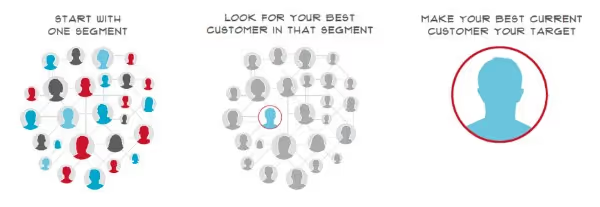
(Source)
Brand Story: Here, define what brand ideas and messages you want to communicate through your content. How will these messages differ from the competition? What will be the tone of your messaging? It’s important to think about how the landscape will evolve after the content is shared with your audience as well.
Channel Plan: Lay out which platforms you’ll use to tell your story. As well, define the criteria, processes and objectives within each. How will you best connect them so they result in a well-rounded brand conversation?
What are your Goals?
A content marketing strategy serves a variety of purposes. How you use it will depend upon the action you want your audience to take:
- Prospecting: Generating leads for sales and marketing teams
- Marketing: Generating interest in your products or services
- Thought Leadership: Developing name recognition to influence your industry
- PR: Developing and repairing public perception about your brand or offerings
- Sales: Helping your sales team close more deals, more quickly
- Community: Developing friends and supporters who get the most of your offerings
The fundamental thing to remember here is that you’re looking to see a profitable shift in your audience’s behavior. This means calls to action.
A comprehensive marketing strategy engages it’s audience with a variety of material to bring them into the engagement cycle. But with every level of content should be a defined conversion goal, something like this:
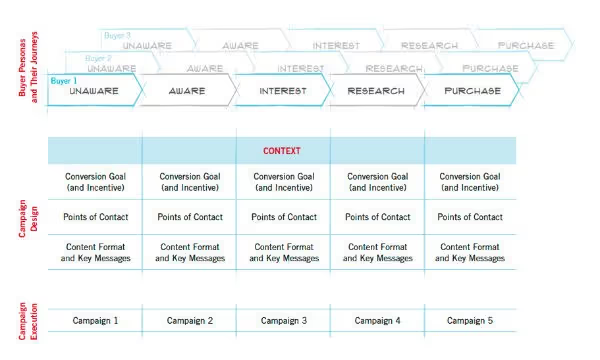 (Source)
(Source)
This phase also requires you thinking beyond a conversion, to the next step. It requires a methodical examination of each stage of engagement and proper planning.
When you’ve mapped out your sales funnel, you can optimize and personalize content in the middle of the buyer journey to lead them to a purchase. Think in terms of small steps, and the triggers that will bring your audience in the next part of their journey.
When you set out to map your content strategy goals, figuring out what actions you want your audience to take is key.
When creating these goals, be sure that each is appropriate to the stage of the buyer journey you’re targeting. For example, top of funnel goals could be opening an email or visiting a website. Middle funnel actions to encourage could be downloading a report, signing up for a free trial, or a webinar.
Centralize Your Marketing
To get conversions, you’ll need to first start a conversation and a great place to host that conversation is your company blog.
It’s also a great place to generate leads. Here, you can acquire a high number of unique page views and centralize your marketing strategy with your audience.
On the blog, less ambitious calls to action (such as subscribing to your blog or following you through social networks) can help with the overall effectiveness of your strategy.
By diversifying your appeal between email subscribers, social platforms, and content on your website, you allow for a more diverse and powerful strategy overall. A well-executed blog will spark curiosity, keep readers interested, and encourage them to come back for more.
Brian Clark, Founder and CEO of Copyblogger relates:
“Don’t focus on having a great blog. Focus on producing a blog that’s great for your readers.”
This means focusing on quality content that begins the sales cycle, but doesn’t come off as ‘salesy’. Positioning your content as media part of a digital magazine, instead of marketing, will make it unique.
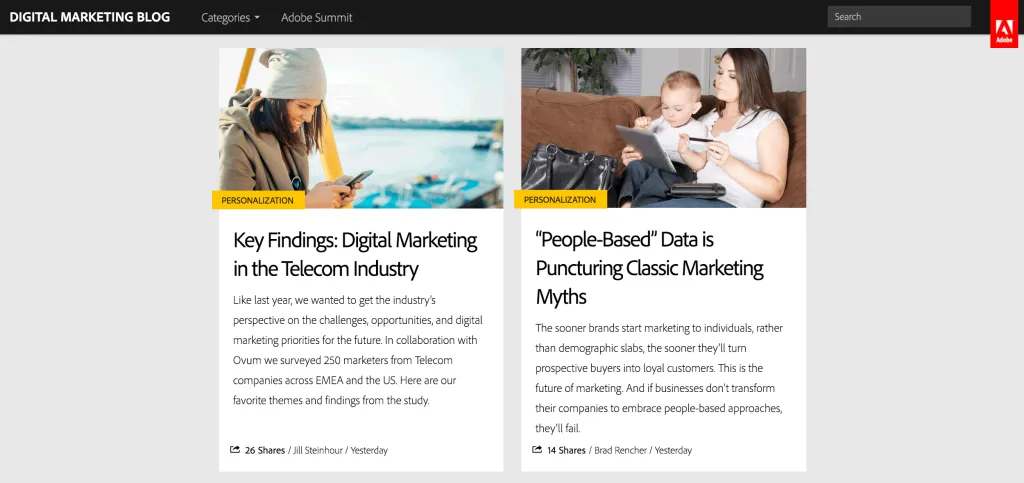
(Source)
This is the Adobe Digital Marketing blog. As a resource for an audience in-line with their Marketing Cloud, this does a great job of hosting the reader experience with quality content delivered in a fresh and appealing ‘top-of-funnel’ way.
With a content hub appearing as neutral, readers are invited to become email subscribers and enjoy other forms of content in a pressure-free way.
2 Fantastic Channels for the Modern B2B Marketing Strategy
The channels in your marketing strategy will be directly informed by your brand and your audience. Whether you use podcasts, ebooks, newsletters, guides, or more - the Content Marketing Institute found that B2B marketers, on average, work on 13 different content channels and target four separate audiences within a strategy.
Specific tactics will vary by industry and company. But a couple of content strategies satisfies a wide set of valuable purposes for B2B marketers. Companies seeking to turn over the greatest number of MQLs position themselves as thought leaders, and establish themselves within a community - here are two examples of great content marketing strategy.
Webinar Registration
As a content marketing tool, webinars are outstanding. CMI reports that 60% of marketers are using webinars. This is likely due to the fact that webinars attract highly qualified leads in the middle or late stages of the sales funnel. A webinar is great way to share your message with viewers and invite their trust with some ‘time-on-page’ learning more about your company.
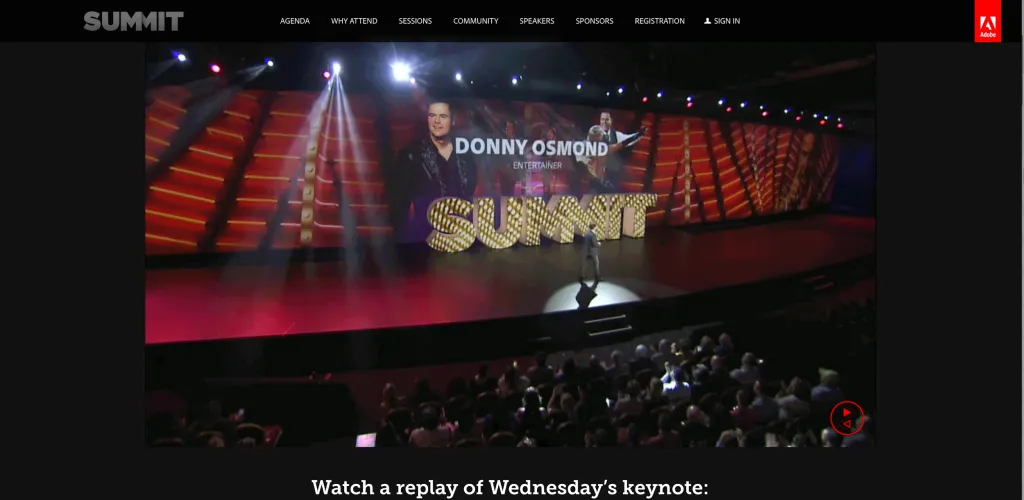
(Source)
In this Adobe webinar, the audience gets a great seat to an exciting conference while being continuously reminded of Adobe’s brand offerings.
For a great example of how to invite your views into a webinar, here’s how New Relic positions thiers:
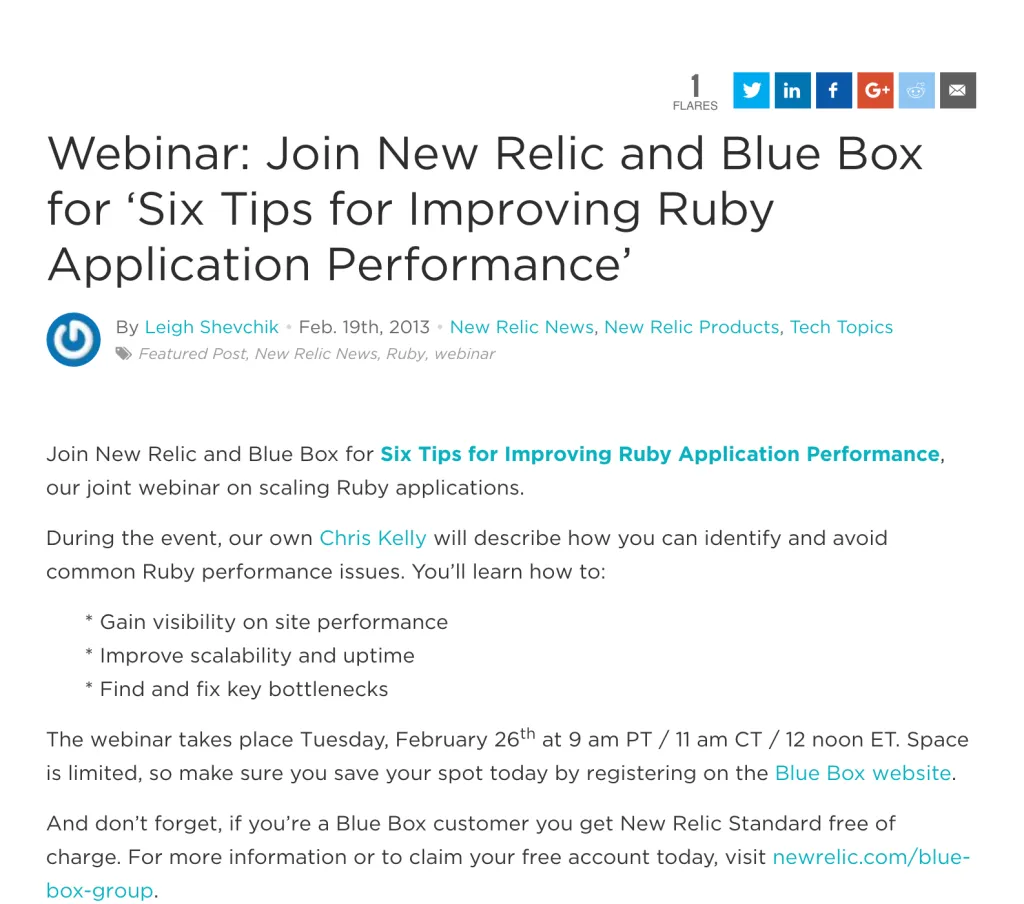
(Source)
The copy clearly defines how to register, what the benefits will be, and that space is scarce. New Relic also plants a CTA for a free account. This page shows exactly how to engage leads, wherever they might be in the funnel.
Case Study and White Paper Downloads
Long-form and substantial content is a great for generating sales. Promoting case studies and white papers which speak to your audience and their industry will boost MQLs and show you as a trustworthy authority.
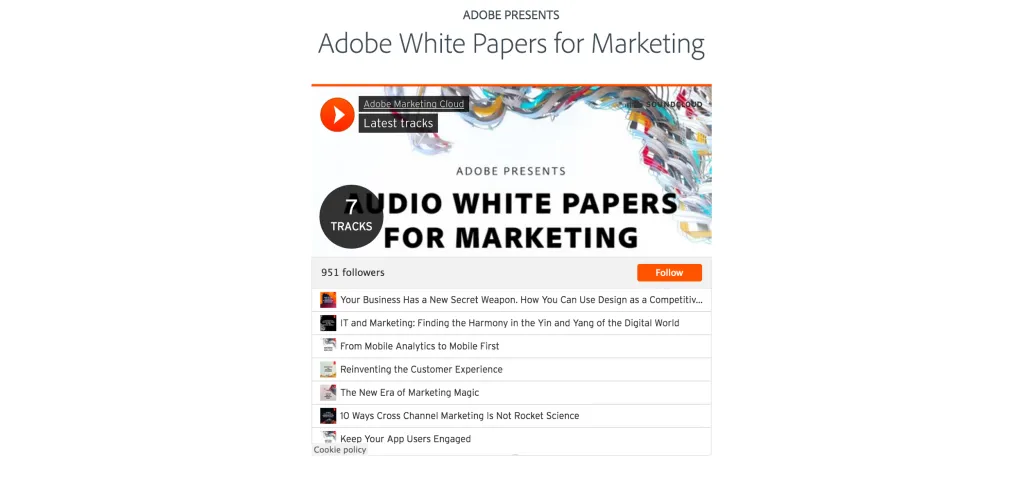
(Source)
Adobe thinks outside the box with their audio white paper series, hosted on Soundcloud. By approaching concept from another angle, the company can heighten its appeal as an industry leader and innovator and also promote content in novel way.
Google 360 provides another great way to lay out a whitepaper offer. Presented as a ‘featured resource’ for those engaging with analytics, this page is clean and helpful to all. White papers and case studies like this are great incentives for signing up for your email list.
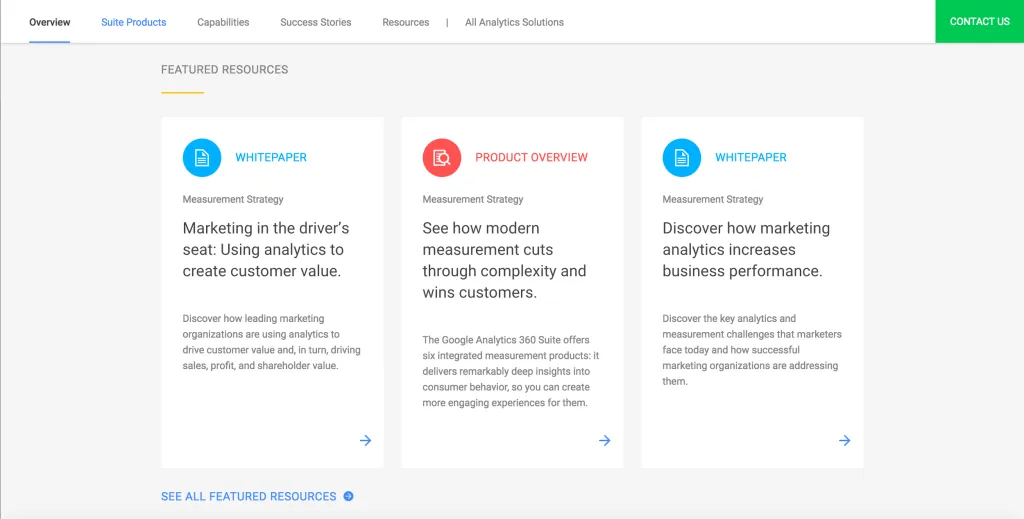 (Source)
(Source)
Key Takeaways
In an industry swimming with content, a B2B company with a well thought out strategy will have an advantage. By first understanding target buyers, marketers can then develop a brand message to match their audience. From this, a map of conversions within the specific buying journey can be created. Only when these core concepts have been finalized should the marketer begin to select their content for engagement within the larger strategy. The examples of white papers and webinars show how leading SaaS companies have used blogs as a pivot point for their great content marketing strategies.